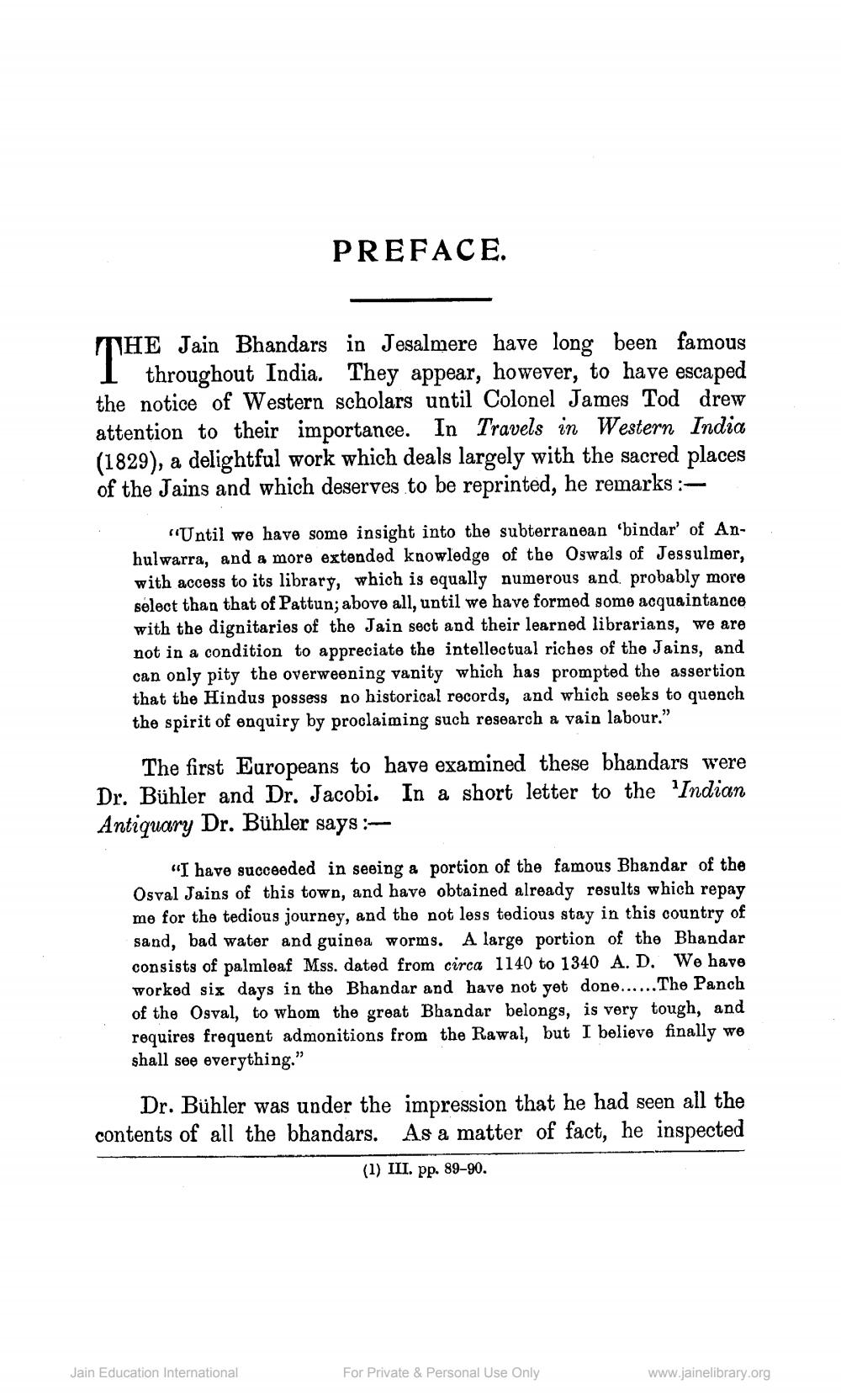________________
PREFACE.
THE
HE Jain Bhandars in Jesalmere have long been famous throughout India. They appear, however, to have escaped the notice of Western scholars until Colonel James Tod drew attention to their importance. In Travels in Western India (1829), a delightful work which deals largely with the sacred places of the Jains and which deserves to be reprinted, he remarks:
"Until we have some insight into the subterranean 'bindar' of Anhulwarra, and a more extended knowledge of the Oswals of Jessulmer, with access to its library, which is equally numerous and probably more select than that of Pattun; above all, until we have formed some acquaintance with the dignitaries of the Jain sect and their learned librarians, we are not in a condition to appreciate the intellectual riches of the Jains, and can only pity the overweening vanity which has prompted the assertion that the Hindus possess no historical records, and which seeks to quench the spirit of enquiry by proclaiming such research a vain labour."
The first Europeans to have examined these bhandars were Dr. Bühler and Dr. Jacobi. In a short letter to the 'Indian Antiquary Dr. Bühler says:
"I have succeeded in seeing a portion of the famous Bhandar of the Osval Jains of this town, and have obtained already results which repay me for the tedious journey, and the not less tedious stay in this country of sand, bad water and guinea worms. A large portion of the Bhandar consists of palmleaf Mss. dated from circa 1140 to 1340 A. D. We have worked six days in the Bhandar and have not yet done......The Panch of the Osval, to whom the great Bhandar belongs, is very tough, and requires frequent admonitions from the Rawal, but I believe finally we shall see everything."
Dr. Bühler was under the impression that he had seen all the contents of all the bhandars. As a matter of fact, he inspected (1) III. pp. 89-90.
Jain Education International
For Private & Personal Use Only
www.jainelibrary.org




